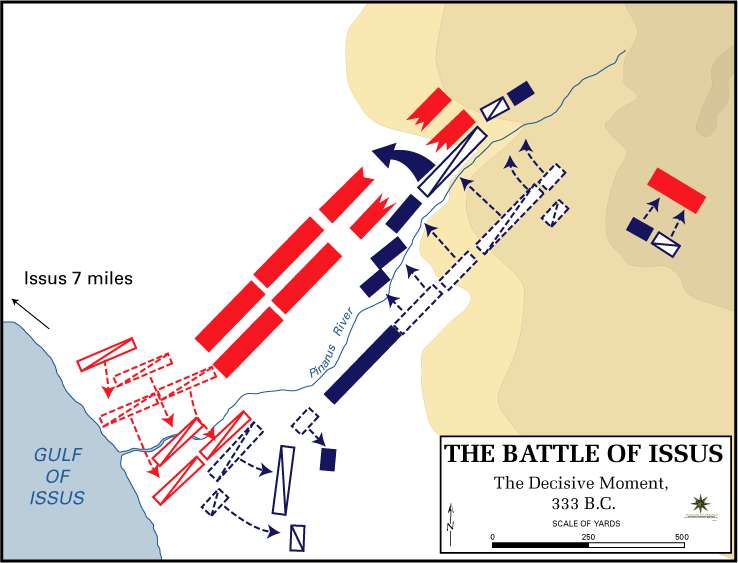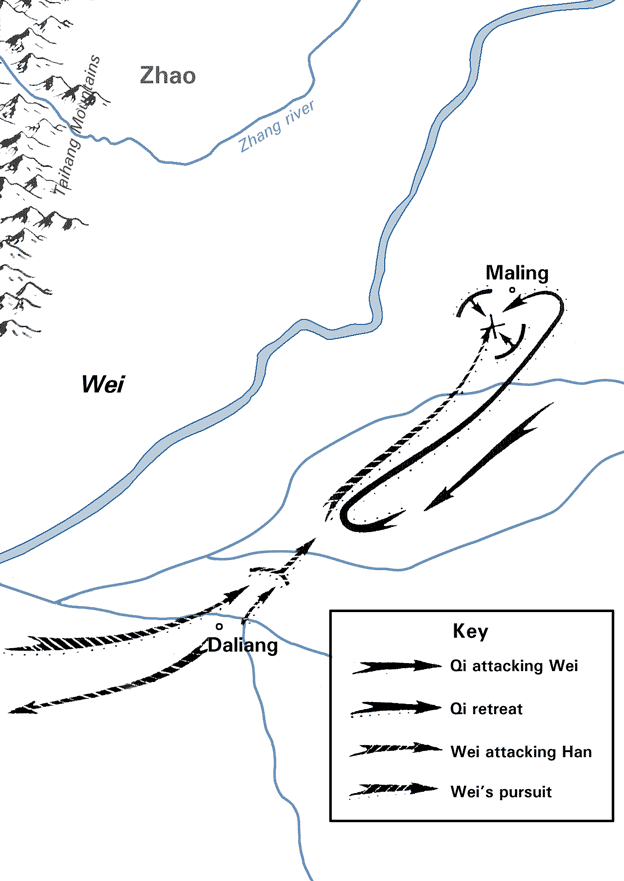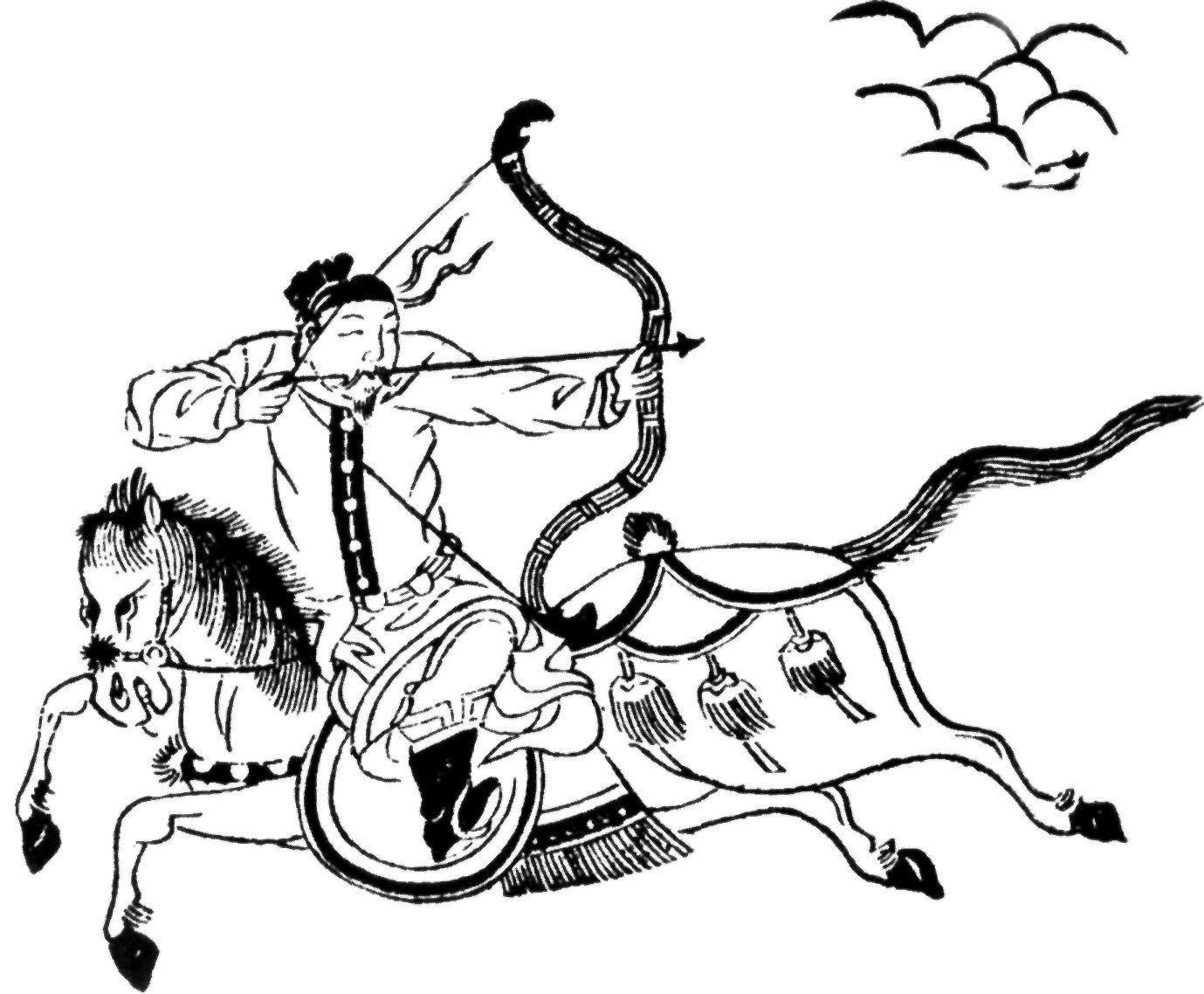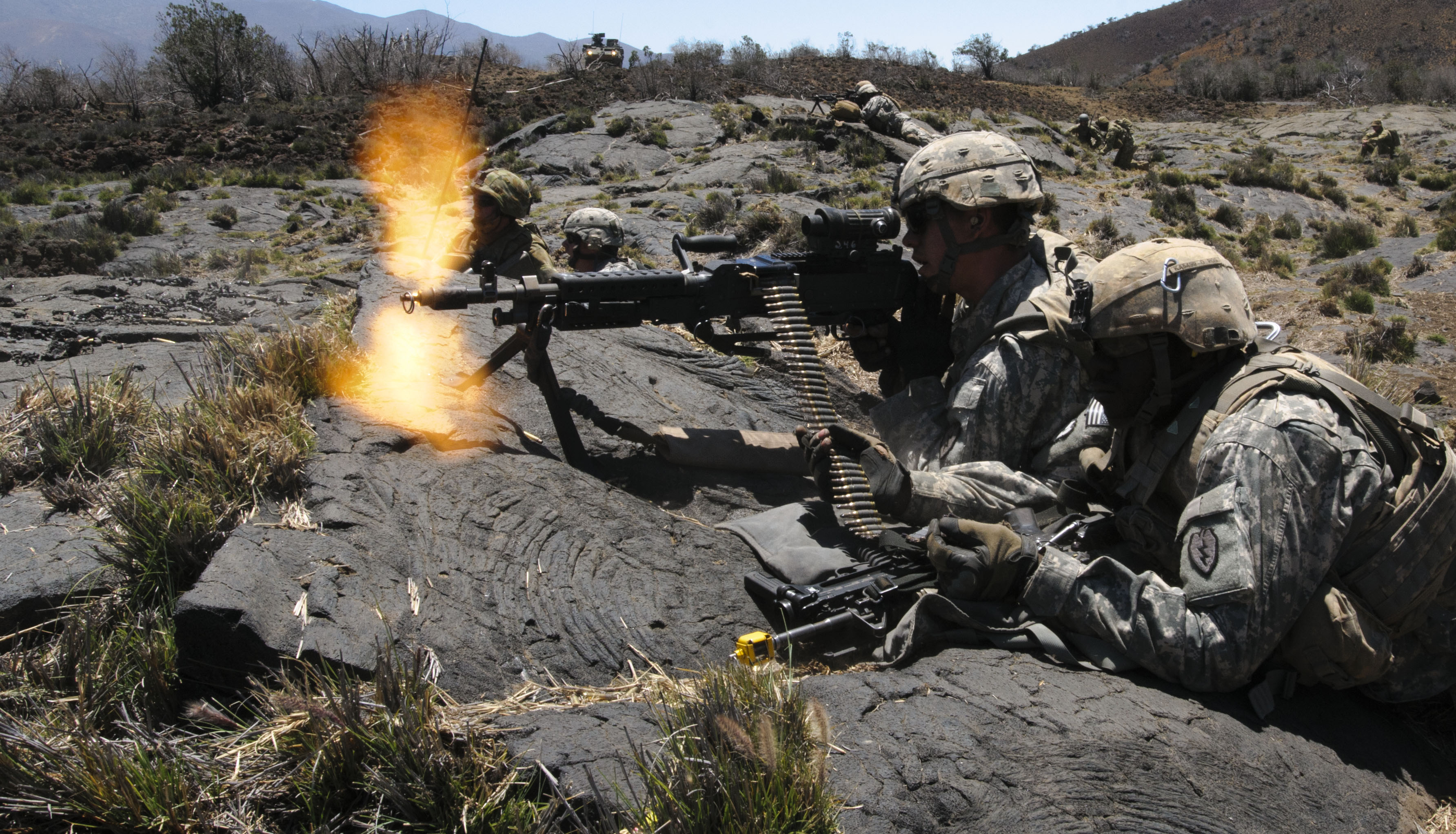List of military tactics on:
[Wikipedia]
[Google]
[Amazon]
This article contains a list of military tactics.
The meaning of the phrase is context sensitive, and has varied over time, like the difference between "strategy" and "tactics".
 # Attack from a defensive position: Establishing a strong defensive position from which to defend and attack your opponent (e.g.,
# Attack from a defensive position: Establishing a strong defensive position from which to defend and attack your opponent (e.g.,  # Single
# Single
 In the 4th century BCE,
In the 4th century BCE,



Tactical
{{Military tactics *
General
* Exploiting prevailing weather – the tactical use of weather as a force multiplier has influenced many important battles throughout history, such as theBattle of Waterloo
The Battle of Waterloo was fought on Sunday 18 June 1815, near Waterloo, Belgium, Waterloo (at that time in the United Kingdom of the Netherlands, now in Belgium). A French army under the command of Napoleon was defeated by two of the armie ...
.
* Fire attacks – reconnaissance by fire is used by apprehensive soldiers when they suspect the enemy is nearby.
* Force concentration
Force concentration is the practice of concentrating a military force so as to bring to bear such overwhelming force against a portion of an enemy force that the disparity between the two forces alone acts as a force multiplier in favour of the c ...
– the practice of concentrating a military force against a portion of an enemy force.
* Night combat
Night combat is combat that occurs during the hours of darkness. It is distinguished from daytime combat by lower visibility and its reversed relation to the circadian cycle. Typically, night combat is favorable to the attacker, with offensive t ...
– combat that takes place at night
Night (also described as night time, unconventionally spelled as "nite") is the period of ambient darkness from sunset to sunrise during each 24-hour day, when the Sun is below the horizon. The exact time when night begins and ends depends ...
. It often requires more preparation than combat during daylight and can provide significant tactical advantages and disadvantages to both the attacker and defender.
* Reconnaissance
In military operations, reconnaissance or scouting is the exploration of an area by military forces to obtain information about enemy forces, terrain, and other activities.
Examples of reconnaissance include patrolling by troops (skirmisher ...
– a mission to obtain information by visual observation or other detection methods, about the activities and resources of the enemy or potential enemy, or about the meteorologic, hydrographic, or geographic characteristics of a particular area.
* Smoke screen
A smoke screen is smoke released to mask the movement or location of military units such as infantry, tanks, aircraft, or ships.
Smoke screens are commonly deployed either by a canister (such as a grenade) or generated by a vehicle (such as ...
ing – the practice of creating clouds of smoke positioned to provide concealment, allowing military forces to advance or retreat across open terrain
Open terrain, open country or open ground is terrain which is mostly flat and free of obstructions such as trees and buildings. Examples include farmland, grassland and specially cleared areas such as an airport.
Such terrain is significant in ...
without coming under direct fire
Direct fire or line-of-sight fire refers to firing of a ranged weapon whose projectile is launched directly at a target within the line-of-sight of the user. The firing weapon must have a sighting device and an unobstructed view to the target, ...
from the enemy.
Eight classic maneuvers of warfare
# Penetration of the center: This involves exploiting a gap in the enemy line to drive directly to the enemy's command or base. Two ways of accomplishing this are separating enemy forces then using a reserve to exploit the gap (e.g.Battle of Chaeronea (338 BC)
The Battle of Chaeronea was fought in 338 BC, near the city of Chaeronea in Boeotia, between Macedonia under Philip II and an alliance of city-states led by Athens and Thebes. The battle was the culmination of Philip's final campaigns in ...
) or having fast, elite forces smash at a weak spot (or an area where your elites are at their best in striking power) and using reserves to hold the line while the elite forces continue forward, exploiting the gap immediately (i.e., blitzkrieg). # Attack from a defensive position: Establishing a strong defensive position from which to defend and attack your opponent (e.g.,
# Attack from a defensive position: Establishing a strong defensive position from which to defend and attack your opponent (e.g., Siege of Alesia
The Battle of Alesia or Siege of Alesia (September 52 BC) was a military engagement in the Gallic Wars around the Gallic ''oppidum'' (fortified settlement) of Alesia in modern France, a major centre of the Mandubii tribe. It was fought by ...
and the Battle of the Granicus
The Battle of the Granicus in May 334 BC was the first of three major battles fought between Alexander the Great of Macedon and the Persian Achaemenid Empire. The battle took place on the road from Abydus to Dascylium, at the crossing of the Gr ...
). However, the defensive can become too passive and result in ultimate defeat. # Single
# Single envelopment
Envelopment is the military tactic of seizing objectives in the enemy's rear with the goal of destroying specific enemy forces and denying them the ability to withdraw. Rather than attacking an enemy head-on as in a frontal assault an envelopment ...
: A strong flank beating its opponent opposite and, with the aid of holding attacks, attack an opponent in the rear. Sometimes, the establishment of a strong, hidden force behind a weak flank will prevent your opponent from carrying out their own single envelopment (e.g., Battle of Rocroi
The Battle of Rocroi, fought on 19 May 1643, was a major engagement of the Thirty Years' War between a French army, led by the 21-year-old Duke of Enghien (later known as the Great Condé) and Spanish forces under General Francisco de Melo ...
).
# Double envelopment
Envelopment is the military tactic of seizing objectives in the enemy's rear with the goal of destroying specific enemy forces and denying them the ability to withdraw. Rather than attacking an enemy head-on as in a frontal assault an envelopment ...
: Both flanks defeat their opponent opposite and launch a rear attack on the enemy center. Its most famous use was Hannibal's tactical masterpiece, the Battle of Cannae and was frequently used by the Wehrmacht
The ''Wehrmacht'' (, ) were the unified armed forces of Nazi Germany from 1935 to 1945. It consisted of the ''Heer'' (army), the '' Kriegsmarine'' (navy) and the ''Luftwaffe'' (air force). The designation "''Wehrmacht''" replaced the previo ...
on the Eastern Front of World War II. It was also executed to prefection by Khalid ibn al-Walid in the decisive Battle of Yarmuk
The Battle of the Yarmuk (also spelled Yarmouk) was a major battle between the army of the Byzantine Empire and the Muslim forces of the Rashidun Caliphate. The battle consisted of a series of engagements that lasted for six days in August 63 ...
in 636 AD.
# Attack in oblique order
The oblique order (also known as the 'declined flank') is a military tactic whereby an attacking army focuses its forces to attack a single enemy flank. The force commander concentrates the majority of their strength on one flank and uses the r ...
: This involves placing your flanks in a slanted fashion (refusing one's flank) or giving a vast part of your force to a single flank (e.g., Battle of Leuthen
The Battle of Leuthen was fought on 5 December 1757 and involved Frederick the Great's Prussian Army using maneuver warfare and terrain to rout a larger Austrian force completely, which was commanded by Prince Charles of Lorraine and Coun ...
). The latter can be disastrous, however, due to the imbalance of force.
# Feigned retreat
A feigned retreat is a military tactic, a type of feint, whereby a military force pretends to withdraw or to have been routed, in order to lure an enemy into a position of vulnerability.
A feigned retreat is one of the more difficult tactics for ...
: Having a frontal force fake a retreat, drawing the opponent in pursuit and then launching an assault with strong force held in reserve (such as the Battle of Maling
The Battle of Maling () took place in Maling, currently Dazhangjia Town (), Shen County (), Henan Province, in 342 BC during the Warring States period (476–221 BC). The combatants were the State of Qi, who fought on behalf of the State of Ha ...
and the Battle of Hastings
The Battle of Hastings nrf, Batâle dé Hastings was fought on 14 October 1066 between the Norman-French army of William, the Duke of Normandy, and an English army under the Anglo-Saxon King Harold Godwinson, beginning the Norman Conque ...
). However, a feigned retreat may devolve into a real one, such as in the Battle of Grunwald
The Battle of Grunwald, Battle of Žalgiris or First Battle of Tannenberg was fought on 15 July 1410 during the Polish–Lithuanian–Teutonic War. The alliance of the Crown of the Kingdom of Poland and the Grand Duchy of Lithuania, led respec ...
.
# Indirect approach: Having a minority of your force demonstrate in front of your opponent while the majority of your force advance from a hidden area and attack the enemy in the rear or flank (e.g., Battle of Chancellorsville
The Battle of Chancellorsville, April 30 – May 6, 1863, was a major battle of the American Civil War (1861–1865), and the principal engagement of the Chancellorsville campaign.
Chancellorsville is known as Lee's "perfect battle" because h ...
).
# Crossing the "T": a classic naval maneuver which maximizes one side's offensive firepower while minimizing that of the opposing force (e.g., Battle of Trafalgar
The Battle of Trafalgar (21 October 1805) was a naval engagement between the British Royal Navy and the combined fleets of the French and Spanish Navies during the War of the Third Coalition (August–December 1805) of the Napoleonic Wars (180 ...
).
Tactics
Deceptive
Sun Tzu
Sun Tzu ( ; zh, t=孫子, s=孙子, first= t, p=Sūnzǐ) was a Chinese military general, strategist, philosopher, and writer who lived during the Eastern Zhou period of 771 to 256 BCE. Sun Tzu is traditionally credited as the author of '' The ...
said "the Military is a Tao of deception". Diversionary attacks, feints, decoys; there are thousands of tricks that have been successfully used in warfare, and still have a role in the modern day.
* Deception and misdirection
** Deception:
*** Perfidy: Combatants tend to have assumptions and ideas of rules and fair practices in combat, but the ones who raise surrender flags to lure their attackers in the open, or who act as stretcher bearers to deceive their targets, tend to be especially disliked.
*** False flag: An ancient ruse de guerre – in the days of sail, it was permissible for a warship to fly the flag of an enemy power, so long as it properly hoisted its true colors before attacking. Wearing enemy uniforms and using enemy equipment to infiltrate or achieve surprise is also permissible though they can be punished as spies
Spies most commonly refers to people who engage in spying, espionage or clandestine operations.
Spies or The Spies may also refer to:
* Spies (surname), a German surname
* Spies (band), a jazz fusion band
* Spies (song), "Spies" (song), a song by ...
if caught behind enemy lines.
*** Demoralization (warfare)
Demoralization is, in a context of warfare, national security, and law enforcement, a process in psychological warfare with the objective to erode morale among enemy combatants and/or noncombatants. That can encourage them to retreat, surrend ...
: A process in psychological warfare that can encourage them to retreat, surrender, or defect rather than defeating them in combat.
** Disinformation
Disinformation is false information deliberately spread to deceive people. It is sometimes confused with misinformation, which is false information but is not deliberate.
The English word ''disinformation'' comes from the application of the L ...
** Military camouflage
Military camouflage is the use of camouflage by an armed force to protect personnel and equipment from observation by enemy forces. In practice, this means applying colour and materials to military equipment of all kinds, including vehicles, ...
** Stealth technology
** Feint
Feint is a French term that entered English via the discipline of swordsmanship and fencing. Feints are maneuvers designed to distract or mislead, done by giving the impression that a certain maneuver will take place, while in fact another, or e ...
or diversionary attacks
** Electronic warfare
Electronic warfare (EW) is any action involving the use of the electromagnetic spectrum (EM spectrum) or directed energy to control the spectrum, attack an enemy, or impede enemy assaults. The purpose of electronic warfare is to deny the opponen ...
** Electronic countermeasures
An electronic countermeasure (ECM) is an electrical or electronic device designed to trick or deceive radar, sonar, or other detection systems, like infrared (IR) or lasers. It may be used both offensively and defensively to deny targeting info ...
*** Electronic counter-countermeasure
Electronic counter-countermeasures (ECCM) is a part of electronic warfare which includes a variety of practices which attempt to reduce or eliminate the effect of electronic countermeasures (ECM) on electronic sensors aboard vehicles, ships and ai ...
s
*** Radio silence
In telecommunications, radio silence or Emissions Control (EMCON) is a status in which all fixed or mobile radio stations in an area are asked to stop transmitting for safety or security reasons.
The term "radio station" may include anything ca ...
– while traveling, a fleet will refrain from communicating by radio to avoid detection by enemy forces.
** Force multiplication
In military science, force multiplication or a force multiplier is a factor or a combination of factors that gives personnel or weapons (or other hardware) the ability to accomplish greater feats than without it. The expected size increase requ ...
* Use of surprise
** Parthian shot
The Parthian shot is a light cavalry hit-and-run tactic made famous by the Parthians, an ancient Iranian people. While performing a real or feigned retreat at full gallop, the horse archers would turn their bodies back to shoot at the pursuing ...
** Hit-and-run tactics
Hit-and-run tactics are a tactical doctrine of using short surprise attacks, withdrawing before the enemy can respond in force, and constantly maneuvering to avoid full engagement with the enemy. The purpose is not to decisively defeat the en ...
** Irregular warfare
Defensive

Offensive

Small unit

See also
* Military strategy *Tactical formation
Element: A group of soldiers
A tactical formation (or order) is the arrangement or deployment of moving military forces such as infantry, cavalry, AFVs, military aircraft, or naval vessels. Formations were found in tribal societies such as the ...
* List of military strategies and concepts
This article is a list of military strategies and concepts that are commonly recognized and referenced. Military strategies are methods of arranging and maneuvering large bodies of military forces during armed conflicts.
Concepts
Economic co ...
* List of established military terms
* List of military operations
References
External links
Tactical
{{Military tactics *
Tactics
Tactic(s) or Tactical may refer to:
* Tactic (method), a conceptual action implemented as one or more specific tasks
** Military tactics, the disposition and maneuver of units on a particular sea or battlefield
** Chess tactics
** Political tact ...